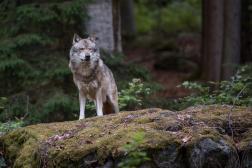A Paleontologist’s Guide to Notable Fossil Sites Across the Gobi Desert

The Gobi Desert, stretching across parts of northern China and southern Mongolia, is far more than just a vast, arid landscape. It’s a treasure trove for paleontologists, offering some of the most remarkable fossil discoveries that have shed light on prehistoric life, especially from the Mesozoic era. This guide explores some of the most notable fossil sites across the Gobi Desert and explains their significance in understanding Earth’s ancient past.
Flaming Cliffs (Bayanzag) – The Dinosaur Nesting Grounds
One of the most famous fossil sites in the Gobi Desert is the Flaming Cliffs, also known as Bayanzag. Discovered in the 1920s by American paleontologist Roy Chapman Andrews, this site revealed numerous dinosaur eggs and fossils. The area’s red sandstone cliffs glow at sunset, giving it its name. Flaming Cliffs has provided critical insight into dinosaur reproduction and behavior during the Late Cretaceous period.
Nemegt Basin – A Window into Late Cretaceous Fauna
The Nemegt Basin is another significant site rich with fossils from approximately 70 million years ago. It has yielded well-preserved remains of large theropods like Tarbosaurus and various herbivorous dinosaurs such as hadrosaurs and sauropods. The discovery here has helped scientists piece together ecosystem dynamics during a wetter period in what is now an arid desert.
Ulaan Khud – Diverse Prehistoric Life Forms
Located near Flaming Cliffs, Ulaan Khud has produced a diverse array of fossils including small mammals, reptiles, and birds alongside dinosaurs. This variety paints a broader picture of life forms coexisting in the Gobi region millions of years ago. Such finds are invaluable for studying evolutionary links between dinosaurs and modern birds.
Ömnögovĭ Province – Site of Feathered Dinosaurs
Recent excavations in Ömnögovĭ Province have uncovered feathered dinosaur fossils that provide crucial evidence about how feathers evolved not just for flight but possibly for insulation or display purposes among theropods. These discoveries emphasize how feathered dinosaurs were widespread across different habitats within the Gobi Desert during the Cretaceous period.
Importance of Continued Exploration in the Gobi Desert
The ongoing exploration of these notable sites continues to revolutionize our understanding of prehistoric life on Earth. Each fossil discovery adds valuable pieces to puzzles about evolution, extinction events, and environmental changes over millions of years. For paleontology enthusiasts and researchers alike, the Gobi Desert remains an unparalleled natural laboratory filled with history waiting to be uncovered.
Whether you’re a seasoned paleontologist or simply fascinated by Earth’s ancient past, exploring fossil discoveries across the Gobi Desert highlights how much there still is to learn about prehistoric life. These remarkable sites not only enrich scientific knowledge but also inspire curiosity about our planet’s deep history.
This text was generated using a large language model, and select text has been reviewed and moderated for purposes such as readability.











